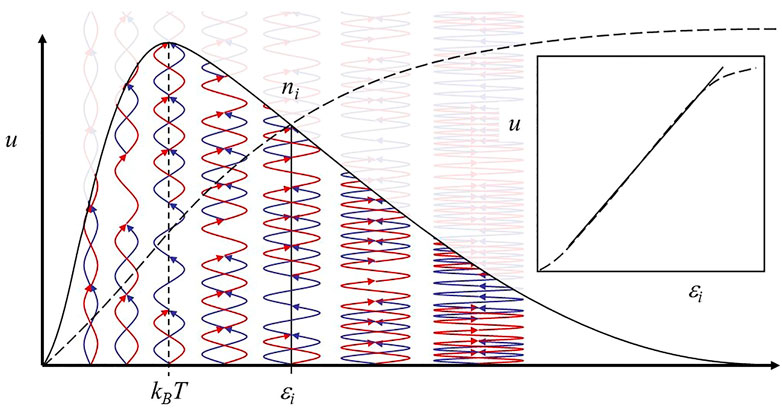Replies: 6 comments 43 replies
-
|
My own tentative theory about the Cosmic Microwave Background is found near the bottom of the webpage G. de Vaucouleurs. At first sight, it seems to be resemblant to yours.
In my model the temperature of the CMB varies from a maximum value of |
Beta Was this translation helpful? Give feedback.
-
A centre of the universe was rejected 440 years ago by Giordano Bruno. |
Beta Was this translation helpful? Give feedback.
-
|
Are we in Black Hole? Basically Schwarzschild radius was worked out for a point mass. Universe is a distributed mass. Even if Schwarzschild radius works for distributed mass it should not work for infinitly distributed mass. So question of a black hole universe comes only for a finite universe.
|
Beta Was this translation helpful? Give feedback.
-
|
@budrap00 Again I largely agree with what you are saying, but once again I say that you are missing some big things. Think back to how the concept of electromagnetic waves developed in the first place. A lot of it came through the very aether models that you so much disdain. But it was those very models, in particularly the ones by Maxwell, that led to the breakthroughs on light as em radiation and eventually Maxwell's equations. People forget (as Maxwell did himself) about all the scaffolding needed to arrive at his equations. Now, extending to gravity, is it not prudent to revisit these models, but by using the thing we know for sure exists, namely electromagnetic waves? In other words, you can complain about introducing new concepts all you want, but without something new you will never get to gravity. |
Beta Was this translation helpful? Give feedback.
-
|
Essential reading: A Possible Scalar Term Describing Energy Density in the Gravitational Field . The gravitational field of a point mass and the electric field of a point charge are structurally similar. Each may be represented by a vector field in which the vectors are directed along radial lines emanating from the point, and the vector magnitudes decrease as the inverse square of the [radial] distance from the point. where is a universal constant, where By analogy, a candidate gravitational energy density term may now be constructed: We will use Newton's law of gravitation without modification, and incorporate the energy density term described above. An expression for the mass of the universe has been found in a previous posting. The radius of the observable universe is, according to the same theory Giving for the gravitational energy density at the rim (thanks, Matt!) of the observable universe However, according to the Variable Mass Theory, the gravitational energy (~ mass) as observed here and now is redshifted, by the maximum amount It is sidewise noticed that CMB energy density + gravitational energy density = 0According to Wikipedia the Stefan-Bolzmann law for thermal radiation is where @ExpEarth . Can the CMB temperature be less than 2.7 K ? It may seem so, but calculations, as always, are approximate. So I think the answer must be no. By giving priority to observational evidence in the first place. And, in the second place, not much else is feasible with values of the constants of nature. |
Beta Was this translation helpful? Give feedback.
-
|
Let me ask a related question. If there was a region where the CMB was at a lower effective temperature, what is the lowest one that could be measured? I recall a graph in previous discussions that showed other forms of radiation (CIB?) that might obscure the CMB peak at those wavelengths. Could someone put that graph here again? |
Beta Was this translation helpful? Give feedback.






-
In a new cosmology model I have been working on there is an unusual problem. It would be too hard to describe the whole model briefly and so am focusing here on this single aspect. In my model the temperature of the CMB varies from a maximum value of 29 K near the rim of the visible universe to a value of 2.7 K at our position. However, there is a possibility that the temperature falls still further to 0 K near the absolute centre of this model universe, as shown in the figure. The question I have is: can this somehow be consistent with the temperature measurements that have been made thus far? I point out in the paper that it could be hard to see the CMB profile at T = 1, for instance, since other radiation forms would obscure the peak there. But what about in the range from 2.7 to 2, for instance? Is there evidence of distance anomalies in that range? Also, if my model is correct, there would be a general discrepancy in the measurements depending on the direction in which they are made. Does anyone know whether Tcmb measurements have been made in all parts of the sky, roughly speaking, or might they be focused in just one direction relative to the Earth?
A second question relates to the distance from our position in the Milky Way to the supposed centre of this universe in my model. While T cmb scales linearly with z, how does this translate to distance? How far away is the centre? Note that in the LCDM model, the CMB temperature scales as: T= T o (1+z), where T o is at our position. If we set z= -1, then that gives T = 0, and this also matches the graphical data, as you can see in Fig. 2 of the attached paper.
CMB_Klimenko_2020_J._Phys. _Conf._Ser._1697_012013.pdf
T(CMB).pptx
Beta Was this translation helpful? Give feedback.
All reactions